Powerful analysis software for Leonardo Mechanograph® systems
Leonardo Mechanography Interface
Main window for selecting measurement types, with a list display of the measurement database
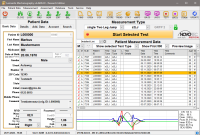
Main window
The main window of the Leonardo Mechanography software allows access to patient and measurement data and starts data acquisition.
The left half of the main window shows a view of the patient database, the right half shows the corresponding entries in the measurement database.
The list on the right-hand side provides a quick overview of the analysis results of the individual measurements; a preview of the currently selected measurement can be displayed in the lower area.
Analysis window
Leonardo Mechanograph®
Leonardo Mechanography offers different display modes depending on the test performed. The standard evaluation is done in the analysis window. The upper half shows the relevant measured variables (force, speed, power, energy, etc.) as a function of time. The lower half lists the relevant analysis parameters and the assignment to reference data (e.g. E.F.I., Force Efficiency).

Graph: Standard view
The standard view shows the relevant measurement curves for the performed test. The force is represented as a sum (sum of the forces of the left and right leg).

Graph: L/R-display
In the L/R view, the force per leg (left/right) is displayed. This view provides a quick overview of asymmetries within the movement.

Graph: Detail view
In this view, additional measurement curves (e.g. body weight, acceleration), distinctive points in time (e.g. start of movement, jump or landing time) and additional analysis parameters are displayed.
This view can also be combined with the L/R view so that either the curve of the total or the individual forces are displayed.

List view
The list view shows the database entries available for the measurement, a brief explanation of the analysis parameters, the current analysis results and the patient record.

Trend view (MTrend)
In the trend view, for measurements of repetitive movements (e.g.: hopping, repeated jumps, Chair Rising Test), the course of the most important parameters (e.g.: peak force, peak power, time per repetition) can be displayed over the period of the measurement (from repetition to repetition).
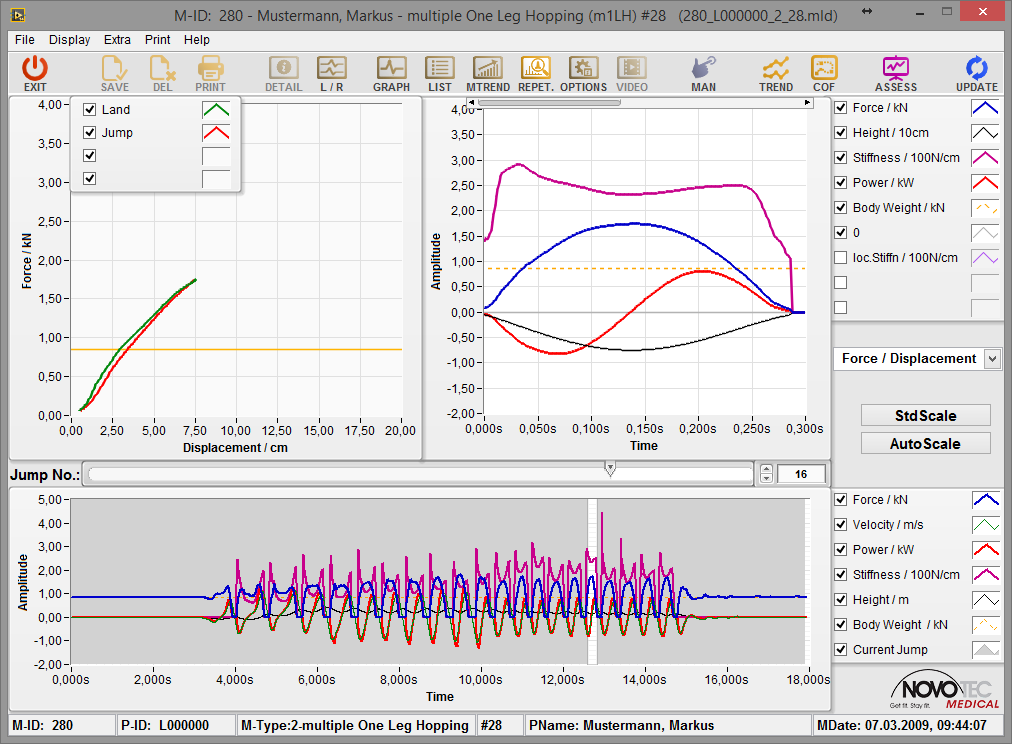
Single repetition
In the trend view, for measurements of repetitive movements (e.g.: hopping, repeated jumps, Chair Rising Test), the course of the most important parameters (e.g.: peak force, peak power, time per repetition) can be displayed over the period of the measurement (from repetition to repetition).
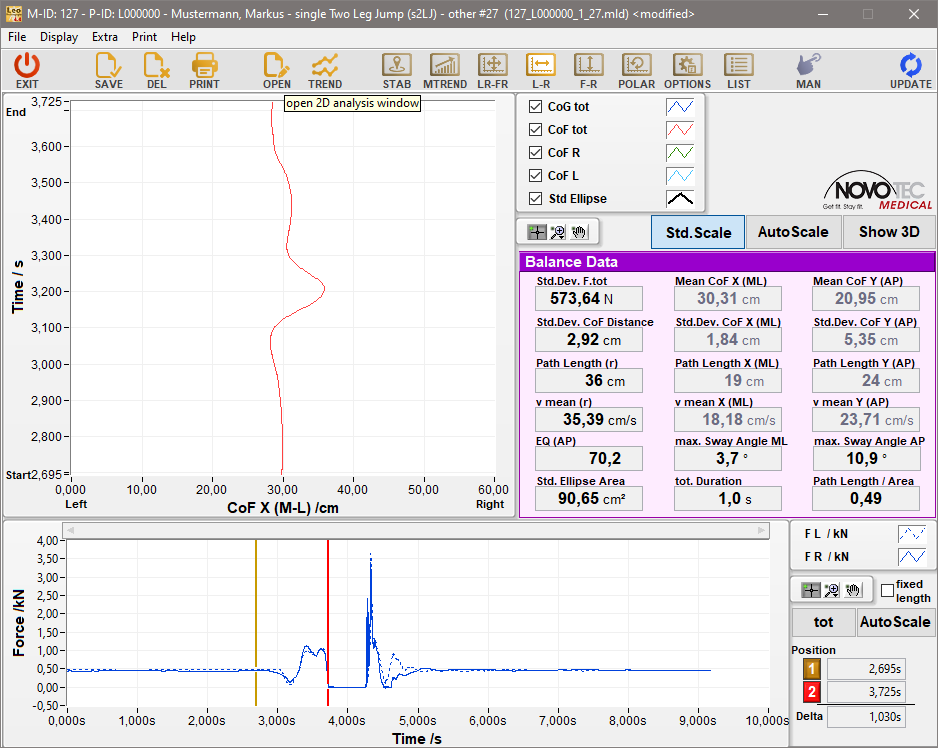
CoF window
The CoF window (Centre of Force or also CoP, Centre of Pressure) shows the temporal curve of the force application point during a measurement. Typically, such analyses are carried out during balance tests (stabilometry, posturometry). However, Leonardo Mechanography allows CoP analysis with any available measurement type.
Advanced trend analysis
Leonardo Mechanograph®
This function is only available in the RES version of Leonardo Mechanography.

Trend analysis detailed view
In the trend window, the progression over time can be displayed for any analysis parameter of the database over any number of measurements. Groups can also be defined and the individual course can be compared with that of the group.
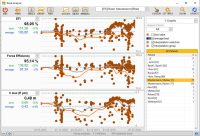
Trend analysis overview
In the trend window, the progression over time can be displayed for any analysis parameter of the database over any number of measurements. Groups can also be defined and the individual course can be compared with that of the group.

Do you have questions about our products or would you like to purchase a product?
Let our experts advise you. Simply arrange a non-binding consultation.
Assessments
Leonardo Mechanograph®
Depending on the software version, different assessments are available. Assessments summarise all measurements carried out for each day and person for various measurement types and present the most relevant results in a compact form.
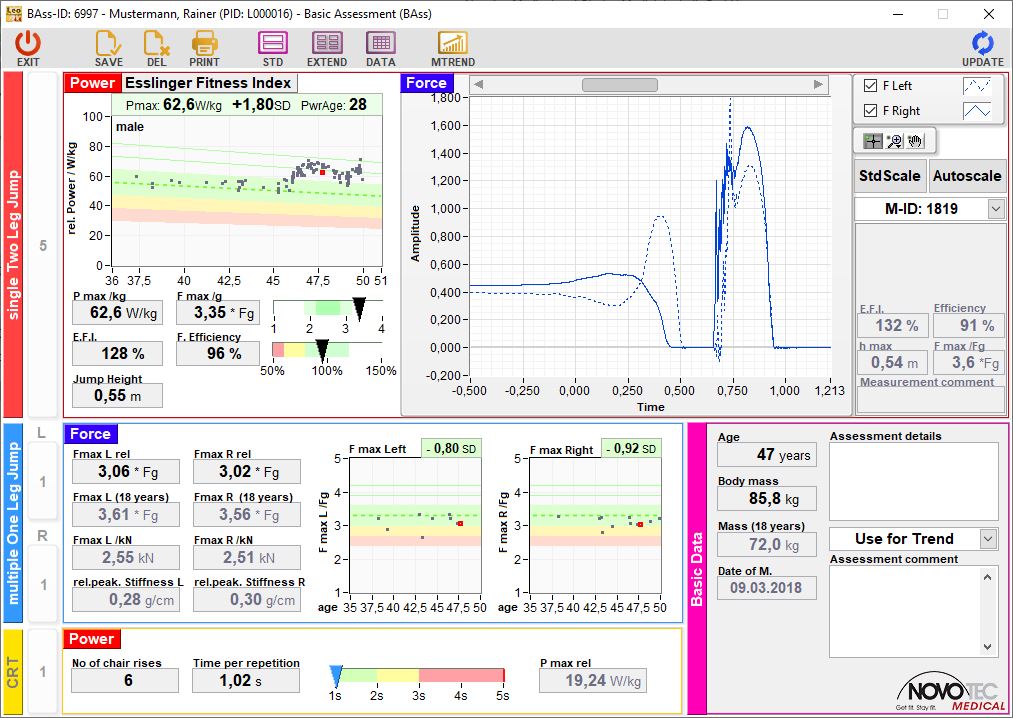
Basic Assessment (BAss)
The Basic Assessment window provides a quick overview of the most relevant measurement results of the standard measurement types (s2LJ, m1LH, CRT, BT, RT) per patient and per measurement day. This allows a quick overview of the most important individual results of the different types of tests and thus of the subject's neuromuscular condition. Two differently detailed views are available.
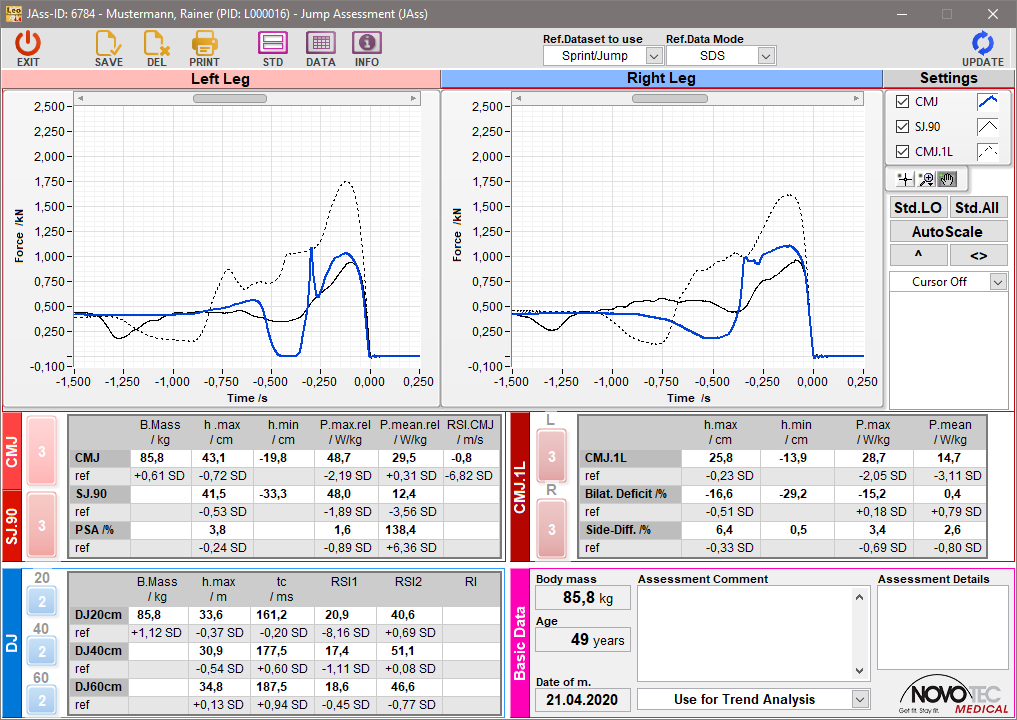
Jumping Assessment (JAss)
Only available in Leonardo Mechanography RES version
The jumping assessment summarizes all CMJ, SJ.90, CMJ.1L, DJ20, DJ 40, DJ 60 of one person and one measurement day. The analysis results are based on the muscle function analysis according to the Swiss Olympic Performance Manual.
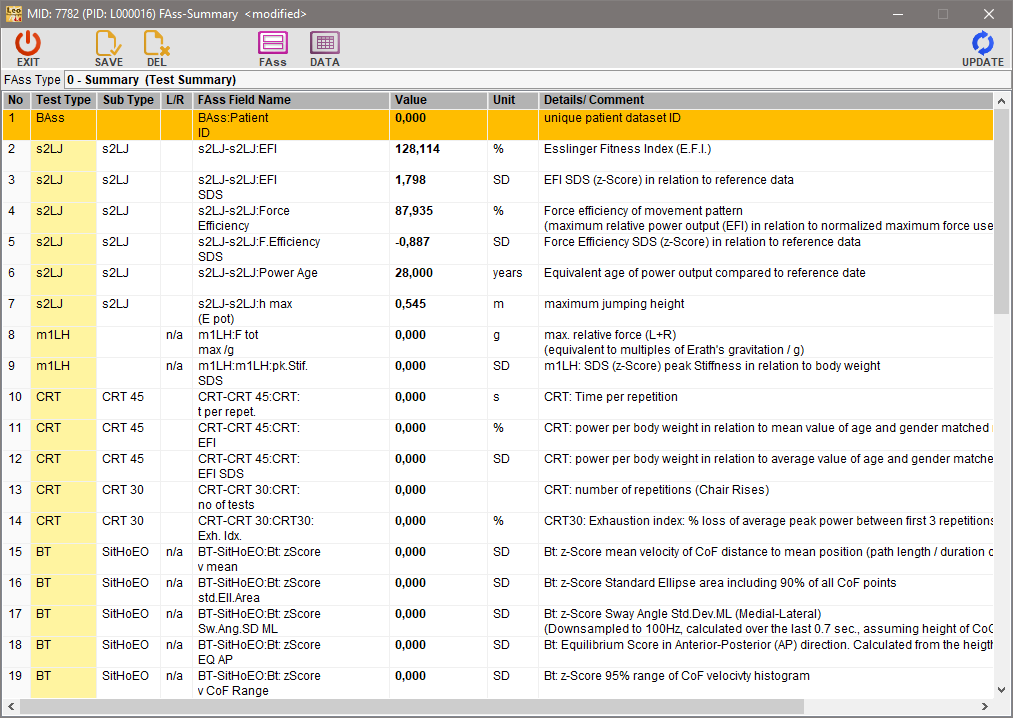
Free Assessment (FAss)
Only available in Leonardo Mechanography RES version
The Free Assessment allows an arbitrary summary of any parameters of measurements that are considered in the BAss analysis. This includes s2LJ, s2LJnj, CMJ, SQ90, BT, RT, HRT, m1LH, m2LH, GrF, GrW, TpTs, DJ, LT.
Let Leonardo Mechanograph® convince you!
Various scientific studies prove the validity of Leonardo Mechanography.
Profit from over 20 years of experience and results from over 150 scientific publications using Leonardo Mechanography world-wide.